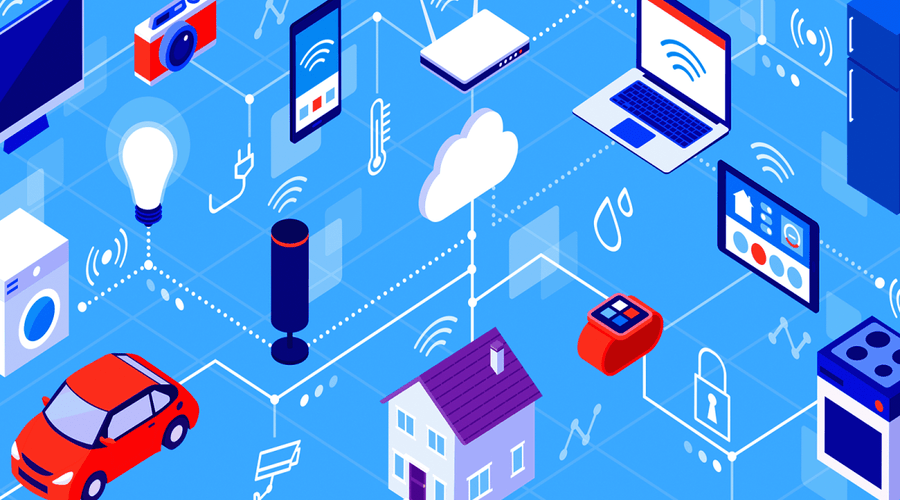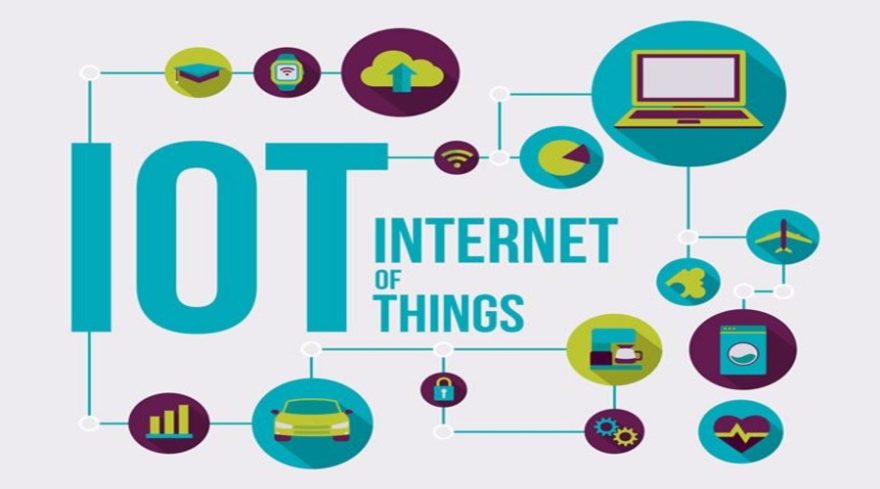Blockchain and the Internet of Things (IoT) are two transformative technologies that have gained significant attention in recent years. Individually, they have revolutionized various industries and processes. However, when combined, blockchain and IoT have the potential to unlock even greater possibilities. In this article, we will explore the future trends and emerging applications of blockchain and IoT, and how their convergence is shaping the digital landscape.
Introduction
The introduction section will provide a brief overview of the article’s topic and its importance in the current digital landscape. It will highlight the rapid advancements in both blockchain and IoT technologies and set the stage for the subsequent sections.
Understanding Blockchain and IoT
This section will delve into the fundamental concepts of blockchain and IoT. It will explain what blockchain is, its decentralized nature, and its role in ensuring data integrity and security. Additionally, it will define IoT and discuss its components, such as sensors, devices, and connectivity, that enable the interconnection of physical objects.
The Convergence of Blockchain and IoT
Here, we will explore how blockchain and IoT can complement each other. The section will highlight the benefits of integrating blockchain with IoT, such as increased security, transparency, and trust. It will emphasize the potential for creating a decentralized network of interconnected devices.
Securing IoT Devices with Blockchain
In this section, we will discuss the vulnerabilities of IoT devices and how blockchain can enhance their security. We will explore concepts like identity management, access control, and device authentication through blockchain technology. The subheading will explain how blockchain’s immutable nature can prevent unauthorized access and tampering.
Securing IoT devices with blockchain technology is a powerful approach to enhance the overall security and trustworthiness of IoT ecosystems. By leveraging the decentralized nature and immutability of blockchain, IoT devices can be protected against potential vulnerabilities and attacks. Blockchain provides a tamper-proof and transparent ledger that ensures the integrity and authenticity of data exchanged between IoT devices. It enables secure identity management, access control, and device authentication, reducing the risk of unauthorized access and data manipulation. The decentralized consensus mechanism of blockchain adds an additional layer of security, making it difficult for malicious actors to compromise the system. Overall, securing IoT devices with blockchain enhances the resilience and trustworthiness of IoT networks.
Enhanced Transparency and Data Integrity
This section will focus on the role of blockchain in ensuring transparency and data integrity in IoT applications. It will discuss how blockchain’s distributed ledger can provide an auditable and tamper-proof record of all transactions and data exchanges within an IoT network. Use cases such as supply chain management and asset tracking will be highlighted. Enhanced transparency and data integrity are significant benefits that blockchain brings to IoT applications. By leveraging the distributed ledger technology of blockchain, IoT ecosystems can achieve a higher level of transparency and trust. Each transaction and data exchange within the network is recorded and stored in a tamper-proof and auditable manner. This transparency ensures that all participants have access to accurate and up-to-date information, promoting accountability and reducing the risk of fraud or manipulation. Moreover, the immutability of blockchain prevents unauthorized alterations to the data, ensuring data integrity and maintaining a reliable source of truth for IoT applications. The enhanced transparency and data integrity provided by blockchain technology instill confidence and enable more secure and efficient IoT operations.
Smart Contracts and Autonomous Transactions
Here, we will explain how smart contracts, powered by blockchain technology, can enable autonomous transactions in IoT ecosystems. The subheading will discuss the benefits of self-executing contracts and how they can streamline various processes, such as payment settlements and automated actions based on predefined conditions.
Supply Chain Management and Traceability
This section will explore the application of blockchain and IoT in supply chain management. It will highlight the benefits of transparent and traceable supply chains, including improved efficiency, reduced fraud, and enhanced customer trust. The subheading will present real-world examples of blockchain-enabled supply chain solutions.

Healthcare and Medical Applications
In this section, we will delve into the potential of blockchain and IoT in revolutionizing healthcare and medical applications. The subheading will cover topics such as secure medical records, interoperability, telemedicine, and the use of IoT devices for remote patient monitoring.
Energy Management and Sustainability
Here, we will discuss the role of blockchain and IoT in optimizing energy management and promoting sustainability. The section will explore concepts like peer-to-peer energy trading, grid management, and the integration of renewable energy sources. Use cases such as smart grids and energy-efficient buildings will be highlighted.
Smart Cities and Infrastructure
This section will focus on the applications of blockchain and IoT in building smart cities and infrastructure. It will discuss how these technologies can improve urban planning, transportation systems, waste management, and citizen engagement. The subheading will present case studies of successful smart city projects.
Challenges and Considerations
In this section, we will address the challenges and considerations associated with the adoption of blockchain and IoT. It will cover issues such as scalability, interoperability, standardization, and the need for collaboration among stakeholders. The subheading will discuss potential solutions and ongoing efforts to overcome these challenges.
When considering the adoption and implementation of blockchain and IoT technologies, there are several challenges and considerations that need to be addressed. Here are the key points to consider:
- Scalability: Both blockchain and IoT generate a vast amount of data. Scaling the systems to handle the increasing volume of transactions and devices is a significant challenge.
- Interoperability: Ensuring seamless integration and communication between different blockchain and IoT platforms is crucial. Interoperability standards need to be developed to enable cross-platform functionality.
- Standardization: Establishing industry-wide standards for blockchain and IoT is essential for widespread adoption. Consistent protocols and frameworks will facilitate compatibility and interoperability.
- Security: While blockchain enhances the security of IoT devices, the overall system must be robust against potential threats such as hacking, data breaches, and unauthorized access.
- Privacy: With the abundance of data collected by IoT devices, privacy concerns arise. Implementing privacy-preserving mechanisms and complying with data protection regulations is necessary.
- Energy Efficiency: Blockchain mining and the operation of numerous IoT devices consume substantial energy. Developing energy-efficient solutions and exploring alternative consensus algorithms are important considerations.
- Regulatory Frameworks: Blockchain and IoT operate across borders, necessitating comprehensive regulatory frameworks. Striking a balance between innovation and protecting user rights is crucial.
- Education and Awareness: Increasing knowledge and awareness about blockchain and IoT among users, policymakers, and businesses is vital to drive adoption and understand the potential benefits and risks.
- Cost: Implementing blockchain and IoT systems can be costly, requiring investment in infrastructure, training, and ongoing maintenance. Assessing the cost-benefit analysis is essential.
- Collaboration: Addressing the challenges associated with blockchain and IoT requires collaboration among stakeholders, including technology providers, industry experts, policymakers, and researchers.
By carefully considering these challenges and addressing them proactively, the adoption and integration of blockchain and IoT can be facilitated, unlocking their full potential in various industries and applications.
Regulatory Frameworks and Privacy Concerns
Here, we will explore the regulatory frameworks and privacy concerns related to blockchain and IoT. The section will discuss the importance of data protection, consent, and compliance with existing regulations. It will also touch upon emerging frameworks and initiatives aimed at addressing privacy concerns.
The Future of Blockchain and IoT
This section will speculate on the future trends and possibilities for blockchain and IoT. It will discuss emerging technologies, such as edge computing and 5G networks, and their potential impact on the convergence of blockchain and IoT. The subheading will paint a picture of a highly connected and secure digital ecosystem.
Conclusion
The conclusion will summarize the key points discussed in the article and emphasize the transformative potential of blockchain and IoT. It will reiterate the importance of their convergence in driving innovation across various industries and shaping the future of technology.
FAQs (Frequently Asked Questions)
Q1. What are the main benefits of combining blockchain and IoT? Combining blockchain and IoT offers several benefits, including enhanced security, transparency, and trust. Blockchain provides a decentralized and tamper-proof ledger, ensuring the integrity of data exchanged between IoT devices. It also enables autonomous transactions through smart contracts, streamlining processes and reducing the need for intermediaries.
Q2. How does blockchain enhance the security of IoT devices? Blockchain enhances the security of IoT devices by providing a decentralized and immutable record of transactions and data exchanges. It enables secure identity management, access control, and device authentication, preventing unauthorized access and tampering. Blockchain’s transparent nature also allows for auditing and tracking of IoT device activities.
Q3. What are some real-world examples of blockchain-enabled supply chain management? Blockchain-enabled supply chain management offers improved traceability, transparency, and efficiency. One example is the use of blockchain to track the provenance of food products, ensuring their authenticity and reducing the risk of fraud. Another example is the verification of ethically sourced materials, such as diamonds or conflict-free minerals, using blockchain technology.
Q4. How can blockchain and IoT improve healthcare and medical applications? Blockchain and IoT can revolutionize healthcare by enabling secure and interoperable medical records, remote patient monitoring, and telemedicine. IoT devices can collect real-time patient data, which can be securely stored on the blockchain, ensuring privacy and integrity. Smart contracts can automate processes like insurance claims and prescription verification.
Q5. What challenges need to be addressed for widespread adoption of blockchain and IoT? Widespread adoption of blockchain and IoT faces challenges such as scalability, interoperability, standardization, and regulatory compliance. Scalability issues arise due to the large volume of transactions generated by IoT devices. Interoperability and standardization efforts are necessary to ensure seamless integration of different systems. Regulatory frameworks must address privacy concerns and establish guidelines for data protection and consent.

